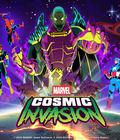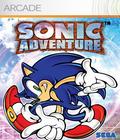On 9/9/99, Sega released what would be its last home console, the Sega Dreamcast, to the public with much fanfare. Magazines hyped the console, and fans were excited to see a machine that surpassed the graphical capabilities of both the Nintendo 64 and the Sony PlayStation. The console launch was accompanied by several titles of varying genres. Some, like Soul Calibur, would go on to be landmark titles that showed off how good the system was while others, like Blue Stinger, faded into obscurity and became subjects of video game trivia.
One of the more significant games to launch with the system was none other than Sonic Adventure, and it was deemed significant for several reasons. It was the first time a Sega system had launched with the blue hedgehog mascot in tow. It was one of the first games that demonstrated the usefulness of the Visual Memory Unit (VMU) aside from saving games, and it was the first title that featured Sonic in a fully polygonal 3-D adventure. With the character's popularity still very high at the time, the title sold very well and became one of the system's best sellers. Time, however, has a tendency to change things. Eleven years later, the Dreamcast is a fondly remembered relic, and the VMU was never to be copied again. Sonic Adventure, once a big disc-based title, is now a downloadable game for both XBLA and PSN, and what was once an enjoyable platforming title has now become very difficult to enjoy.
While there is one central plot to the game, the multiple playable characters also provide an opportunity to tell multiple subplots. As with every game in the series thus far, Dr. Robotnik, also known as Dr. Eggman to our heroes, is on a quest for world domination. In order to accomplish it this time, he has enlisted the help of a creature named Chaos, who is made of water and seems to grow in both size and power when he ingests a Chaos Emerald. As Sonic or Tails, your main mission is to try and get all of the Chaos Emeralds before Robotnik does and stop Chaos. With Knuckles, the guardian of the emeralds, your mission is to recover the emerald shards to make the gems whole again. Amy's mission is to help a stray bird find his way home while E-102, one of Robotnik's drones that has suddenly become self-aware, is now on a mission to free the animals that are trapped in his former master's machines. Finally, Big the Cat, a resident of the forest in the Ancient Ruins, simply wants to find his frog friend that ran away during the commotion.
The six characters also make for six different types of gameplay when a character enters an action stage. Everyone plays the same in the adventure stages, which are essentially hubs for players to find hidden emblems and get from one action stage to another. Each completed level gives the player an emblem to signify its completion, and more medals can be earned if players play the same level again and fulfill secondary requirements, such as completing the level under a set amount of time. Sadly, the emblems do nothing useful in the game, though completionists will likely grab them all just because they exist.
One of the main reasons fans have grown so apathetic toward the Sonic series is due to the large cast of characters, giving less focus on Sonic and more on diverging game styles. While people will argue that Sonic Heroes is where things got out of control, Sonic Adventure is where the apathy first began to brew. Part of the reason stems from the single-minded nature of the cast in terms of gameplay. Both Sonic and Tails feature some diversity, as they have a few flying and snowboarding levels to go along with their platforming stages, but everyone else is stuck doing only one kind of task. Every time you play as Knuckles, your only job is to find Chaos Emerald shards as quickly as possible. Amy plays as a much slower version of Tails, since she can't run fast or fly, but she can smash things to oblivion with her hammer. E-102 only gets to blast things in his levels, giving the Sonic franchise some shooting levels way before Shadow was conceived. The lack of variety isn't too bad until you get to Big the Cat, whose sole purpose is to fish. The fishing makes for a decent minigame, but his missions feel out of place in a game where everyone else experiences different levels of action. His levels are necessary to complete the story, and that drags down the enjoyment factor.
So far, a few of the Dreamcast ports that have made it to XBLA have missed something during the transition. While Rez and Ikaruga may have had everything intact, Soul Calibur lost some editing options, and the upcoming Crazy Taxi port won't have its original soundtrack. Sadly, Sonic Adventure falls into the latter camp, though some of that isn't by choice. The Chao raising minigame, for example, is still in the game, though the lack of a device like the old Dreamcast VMU means that training your Chao will only occur when your system is on, as opposed to being able to do it on the go. While it is unknown whether the game will recognize dates like Christmas and Halloween to initiate changes to the scenery, the ability to download other theme packs and small items, like menu voice changes, is completely absent.
The biggest omission, however, is the lack of the DX levels and content that was made available to GameCube owners once the game made it to that system. To be fair, the content is available as DLC, so those who want a purely Dreamcast experience don't have to go through the extra missions and playing as Metal Sonic if they don't want to. For those wondering, the DLC size is quite substantial, dispelling the thought that paying an extra $5 will simply get you an unlock file. Having those things unavailable to Xbox 360 and PS3 owners makes the GameCube and Dreamcast versions a little more desirable by comparison.
For the most part, the sound is good. The voice actors are the same ones the series has used going forward. It isn't much of a shock to hear Sonic or Robotnik speak, since they aren't different than what fans hear in Sonic games or the Sonic X TV series. Most of the lines are good, though there are a few instances, such as Sonic watching Tails crash his plane, when the delivery is laughably bad. The music is the standard guitar-heavy material you've been accustomed to hearing from a Sonic title. The theme songs for each character are out in full force, with lyrics for a few of them. Some, like Sonic's theme that plays in the opening movie, are cheesy but good while others, like the themes for Amy and Tails, feel odd since the lyrics are being spoken during their in-game cut scenes. Interestingly, there is a pause between tracks. For example, going from Amy's theme to E-102's theme creates a period of silence as the transition occurs. This was understandable on the Dreamcast since the musical tracks were being played directly from the disc. For a downloadable release, though, it comes across as an issue in need of fixing.
Graphically, Sonic Adventure is a polygon-perfect port of the original Sega Dreamcast title. The enemies still look as good as the main characters, while the human bystanders don't look quite human because of their flat faces and oddly jointed limbs. The same can be said for the animations; the bystanders move robotically, and while the main characters don't fare much better thanks to abrupt animation frame transitions and bad lip sync, they sport better overall animations. The environments look decent, though some textures, like the ground in the Ancient Ruins, are still flat and blurry while the particle effects look fine.
A polygon-perfect port also means that this version carries with it some of the same issues that it had before. There are plenty of seams in the ground environments, more of them noticeable in the adventure levels than in the action levels. The camera issues still linger. Sonic's speed causes the camera to have a hard time keeping up, resulting in abrupt swings of the viewpoint, but the same thing happens with Knuckles, Tails and the other playable characters. While a polygon-perfect port is commendable in keeping the game as faithful to the original as possible, it would have been nice to see an option to get a 16:9 display. No matter what, the game is always viewed in 4:3 with a constant blue background taking up the rest of the space. Since the option for 16:9 full screen is there for the older Genesis titles and has already been confirmed for the upcoming Crazy Taxi port, it would have been nice to see it for one of Sega's flagship titles.
The controls provide the game with a somewhat slippery experience, depending on which character you're playing. Basic movement with the slower characters like Amy, Big the Cat and E-102 are fine, since they are easy to control with the analog's sensitivity level. Knuckles and Tails move at a faster pace, but they still feel controllable enough to where you can make quick turns to catch rings before you pass them by. Sonic, on the other hand, feels out of control because of his speed. In the 2-D environments of the older games, the speed wasn't much of an issue since you'd only have to worry about a few of the movement planes containing hidden dangers. In 3-D, however, you have the added worry of not being able to get lines of rings or missing a monitor containing an extra life. A tighter control sensitivity level would have done wonders in fixing this since the alternative — slowing down Sonic — is out of the question. As it stands, his levels simply become an excuse to show off level architecture while giving you little to control in the process.
Sonic Adventure is still a loved title among some hardcore Dreamcast enthusiasts, but those may be the only people who need to pick up this title without any reservations. With so many things going against it, including the absence of the additional levels made for the GameCube release if you don't opt in for the DLC, it becomes difficult to recommend the game on the Xbox 360 when there are other, better Sonic titles available. If you've never owned a Dreamcast or GameCube and are mildly interested in the game, be sure to try out the demo. Otherwise, get Sonic Unleashed if you want a better 3-D Sonic game or Sonic the Hedgehog 4: Episode 1 if you want a return to 2-D Sonic glory.
Score: 6.0/10
More articles about Sonic Adventure










 Sonic Adventure features all of the gameplay that older players fell in love with, whilst allowing a new audience to discover it for the very first time, incorporating all-new enhancements and features such as high resolution visuals and surround sound. Online leader boards are now implemented, all-new Achievement and Trophy integration.
Sonic Adventure features all of the gameplay that older players fell in love with, whilst allowing a new audience to discover it for the very first time, incorporating all-new enhancements and features such as high resolution visuals and surround sound. Online leader boards are now implemented, all-new Achievement and Trophy integration.






